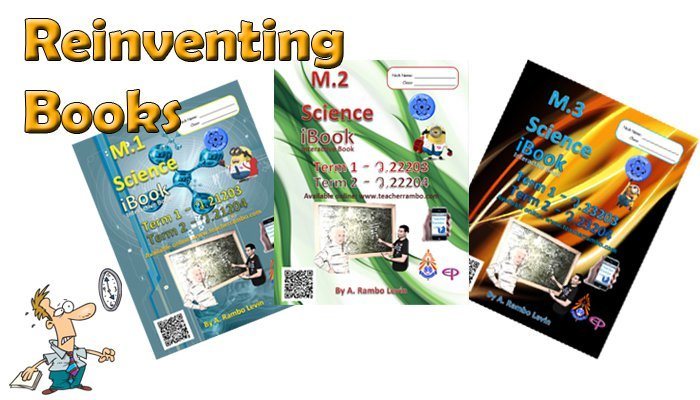The Book As An Interactive Device To Understand Today's Educational Technology
The traditional media used in education has at least one major Achilles heel. No matter how well produced and instructional the content may be, the learning experience is primarily passive and the extent to which learners can control the flow of that content is limited. For the broadcast media of radio and television, the situation is much worse in the case of the as the only opportunity for viewer agency is to turn it on or off. When the content is recorded and made locally accessible, a viewer can replay segments of the instruction as many times as needed, that control significantly increases, but overall, the instructional experience is not as optimal as it could be. This is because the media is inherently linear, designed to be consumed in a straight line from beginning to end.
This serious limitation of traditional linear media weighs heavily on instructors looking to create a more effective learning experience. A novel or movie may depend on this linearity to convey the narrative arc, which is essential to its form, but this can present an impediment to more instructional kinds of media. One way to overcome those limitations is to increase the amount of agency the learner has by making the media interactive.
Comparing a book with a movie or a video is a useful exercise to explore interactivity with. Even though both are best consumed in a linear, start-to-finish manner, the book contains some features that make navigating through it easier. It contains words, grouped into paragraphs that can be scanned quickly for individual words, and it may have subheadings to further identify the ideas encrypted into those words. Each page has a unique number that makes it easy to identify and find. Those pages are organized into chapters, each one identified with a meaningful title, and often has a table of contents that can direct a reader to that particular printed page where that chapter begins. At the end of the book, an index can direct searches to specific pages that respond to a reader's query.
A film or video has none of these simple, but invaluable navigational affordances. All we can do is start it, stop it, or scan it at a higher speed to find the parts we're looking for; but the interfaces for doing so are too crude, making the navigational process very slow and cumbersome. In film and video, the unique identifier of a portion of the media (like a page number in a book) is replaced by a time from the start of the clip. An interactive media system will allow a viewer to directly play the media starting from that point, and stop at some other predetermined time. The time it takes to do this varies depending on the technology used. Early videotape-based systems could sometimes take minutes to fast forward or rewind to the desired spot; videodiscs could move to a new position in under ten seconds;, and modern computer-based systems can instantly access any point within the media.
This ability to randomly access content offers a wide range of new capabilities to instructors, and many of them simply echo the navigational and search features that books already do quite well. Some systems provide access to the content by time (the page number), searching by specific words (the index), and access to menu clips identified by a title (the table of contents). But the potential for transcendental change through interactivity comes when random access is paired with computer control.
Computer control of media opens up the broad potential for making instruction using media much more responsive to learners, enabling them to easily choose sections to view, repeat, or ignore based on their individual needs and pacing requirements. Media controlled in this way makes it easier to implement the constructivist approaches advocated by modern learning theorists. Coupled with assessment, the ability to deliver specific media clips at almost any granularity that random access affords can enable systems that can respond to learner's responses and provide customized content based on their needs.
Excerpted From Sage on the Screen: Education, media, and how we learn by Bill Ferster. Johns Hopkins University Press, 2016









